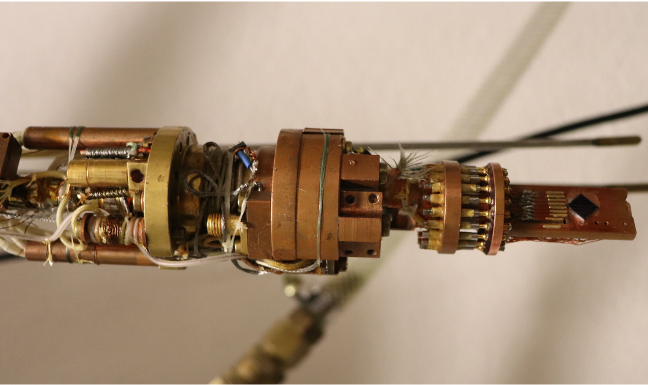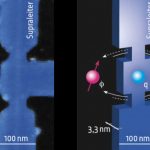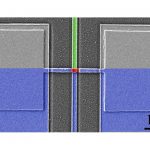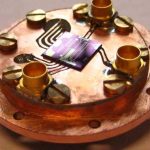- Home
- Research
- Quantum Systems
- Work-Groups
- Quantum Circuits
Quantum Circuits
The Quantum Circuits group studies the basic physics as well as possible applications of thin-film based circuits at low temperatures. Specifically, quantum effects and light-matter interactions are used to achieve unique functionalities and methods are investigated to combine them advantageously with other quantum systems in hybrid structures. This work is closely linked to the use of innovative micro and nanotechnologies from the KMNT and the use of new materials. The working group bundles competencies starting from the theoretical analysis of fundamental working principles, through simulations and the design of the circuit to experimental verification and integration into complex measuring systems. One focus lays on investigations of the quantum dynamics with the goal of making them usable for applications. The use of chip-based solid-state quantum systems based on building blocks such as superconducting quantum bits (qubits), resonators, beam guiding elements and non-linear components, e.g. Josephson junctions and superconducting quantum interference detectors (SQUIDs), enable high controllability and scalability. The holistic approach includes the development of control and readout circuits and methods as well as corresponding measurement environments in order to guarantee the user benefit. In the second focus, application-oriented research is carried out into highly sensitive superconducting radiation detectors. The range includes the ultra-sensitive detection of individual microwave photons, arrays of large-area Josephson junctions (STJs) as XUV radiation detectors and bolometers for security and astronomical applications.
Contact
Research Topics
Central research topics result from application scenarios where the use of quantum effects in solid-state-based circuits offers new or improved functionalities. These include:
- Investigation of fundamental effects in solid-state quantum systems and hybrid arrangements,
- Design, scaling, coupling, characterization and parameter optimization of superconducting quantum bits (qubits) and quantum metamaterials,
- Quantum sensors and highly sensitive superconducting radiation detectors such as arrays of Josephson junctions,
- Single photon sources and detectors as well as quantum-limited amplifiers in the microwave range,
- New materials, e.g. ultra-thin NbN.
Areas of application

- Sensors, e.g. Microwave single-photon detectors and amplifiers for axion search and high-resolution XUV detectors,
- Quantum computing, simulation and on-chip communication,
- Enabling technologies such as readout and control circuits, e.g. Microwave multiplexer, SQUID and parametric amplifier,
- High resolution electrical and magnetic measurement technologies for scientific instrumentation, e.g. beam intensity measurement for accelerator systems.



